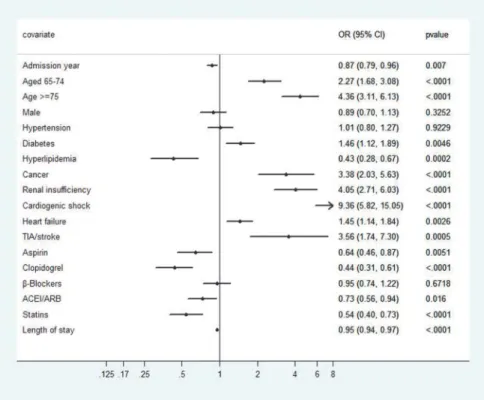Trends in the use of guideline-recommended medications and in-hospital mortality of patients with acute myocardial infarction in a Chinese population.
Texto
Imagem




Documentos relacionados
The aim of this study was to assess the rate of mortality from acute myocardial infarction in the period from 1998 to 2009 in Curitiba, as well as the distribution of mortality
Objective: To assess the evidence-based literature supporting the use of traditional Chinese medicine Kampo herbal and Acupuncture in stone disease management.. Materials and
In this short communication, we provide clinical examples of Meridian Energy Analysis Device application, especially in the field of traditional Chinese medicine, discuss
This study aimed at assessing the impact of smoking on in-hospital morbidity and mortality of patients experien- cing acute myocardial infarction and to assess the associa- tion
In this study, patients who died in hospital presented higher rates of previous acute myocardial infarction, previous coronary artery bypass graft surgery,
Traditional chinese medicine (TCM) includes the inspection of the tongue as an im- portant means for diagnosis and prognosis of disease2. In WM, black coated tongue is associated
Registry of Acute Coronary Events risk score in prediction of acute myocardial infarction mortality in hospitalised Chinese patients aged 80 and over. Costa PM,
This study focuses on issues relating to the circulation and adaptation of foreign medical knowledge in Peru and the US, showing how in these countries – unlike China,